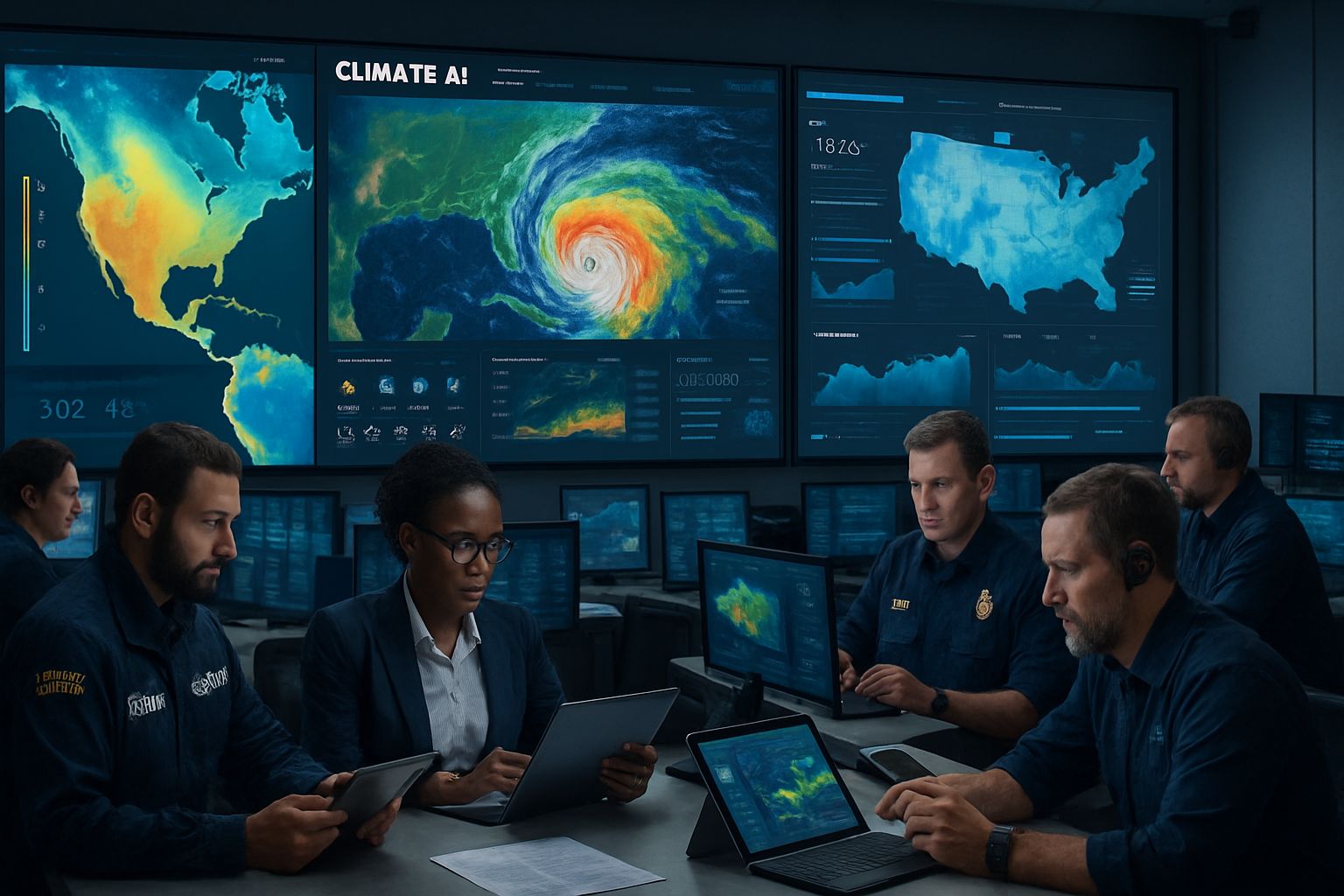
AI CERTS
3 hours ago
Climate AI Redefines 15-Day Extreme Weather Forecast Accuracy
Recent AI Forecasting Milestones
DeepMind’s GraphCast astonished scientists in late 2023. Moreover, the model outperformed a leading physics system on 90% of verification targets for ten-day forecasts. Meanwhile, GenCast pushed the envelope to fifteen days using diffusion ensembles. ECMWF followed by operationalizing its Artificial Intelligence Forecasting System in February 2025. Florence Rabier stated, “This milestone will transform weather science and predictions.”

Metrics Behind 89 Percent
Many outlets cite an 89% precision figure. Nevertheless, that percentage derives from DGMR nowcasting, not medium-range forecasting. Meteorologists preferred DGMR outputs for five-to-ninety-minute rain scenarios in 89% of test cases. Therefore, the statistic reflects human preference rather than quantitative skill for week-two extremes.
Key recent figures include:
- GraphCast: beat a deterministic baseline on 90% of 1,380 targets.
- GenCast: surpassed an ensemble baseline on 96% of 1,320 targets.
- ECMWF AIFS: delivered up to 20% gains on select metrics with 1,000× lower energy use.
These accomplishments confirm steady progress. However, none combine two-week lead time with an 89% global precision value.
The milestones demonstrate rapid capability growth. Consequently, deeper scrutiny of evaluation methods remains essential before operational adoption.
These developments showcase escalating momentum. Furthermore, the next section examines statistical realities that underpin performance claims.
Current Statistical Reality Check
Forecast accuracy hinges on chosen metrics. In contrast, headlines often treat every percentage as interchangeable. Standard measures include RMSE, CRPS, and hit rates for binary events. Additionally, human preference studies, like DGMR’s, offer valuable context yet differ from objective scores.
Extreme events complicate assessment. Rare storms appear sparsely in historical training data. Therefore, models sometimes underperform on intensity even when track location errors shrink. Experts recommend hybrid systems combining physics with Climate AI outputs to mitigate such gaps.
Verification also varies by region, variable, and lead time. Consequently, a single aggregated number rarely captures full skill. Clear documentation of datasets and scripts allows independent replication, building trust among forecasters.
Understanding metric nuances prevents overclaiming. However, organizations must still translate statistical gains into real-world benefits.
These realities underscore careful interpretation. Subsequently, we explore frontier research extending forecasts to two weeks.
Operational Impact And Risks
Faster inference remains the most tangible benefit today. Moreover, once trained, ML models produce global forecasts in seconds instead of hours. Energy grids, airlines, and logistics firms gain extra update cycles daily. Therefore, operational flexibility improves.
Two Week Forecasting Frontiers
GenCast and AIFS now provide credible signals at fourteen to fifteen days. Additionally, startups integrate similar engines into consumer apps. When cyclones threaten shipping lanes, earlier deviation plans cut costs and enhance Disaster Prevention. Yet, rare-event intensity forecasts still face uncertainty.
Benefits For Public Safety
Authorities require ensemble outputs to quantify risk. Consequently, diffusion-based ensembles deliver probability fields useful for evacuation triggers. Furthermore, rapid updates allow forecasters to issue rolling guidance without waiting for supercomputer queues.
Professionals can deepen relevant skills through the AI+ Data Robotics™ certification. The program covers validation techniques vital for responsible Weather Prediction services.
Operational gains promise stronger early-warning systems. Nevertheless, governance frameworks must ensure transparent communication of uncertainty.
The impacts prove significant for safety and commerce. Consequently, the concluding section synthesizes lessons and recommends next steps.
These sections collectively reveal genuine progress. However, continued vigilance is required to separate marketing from measurable science.



